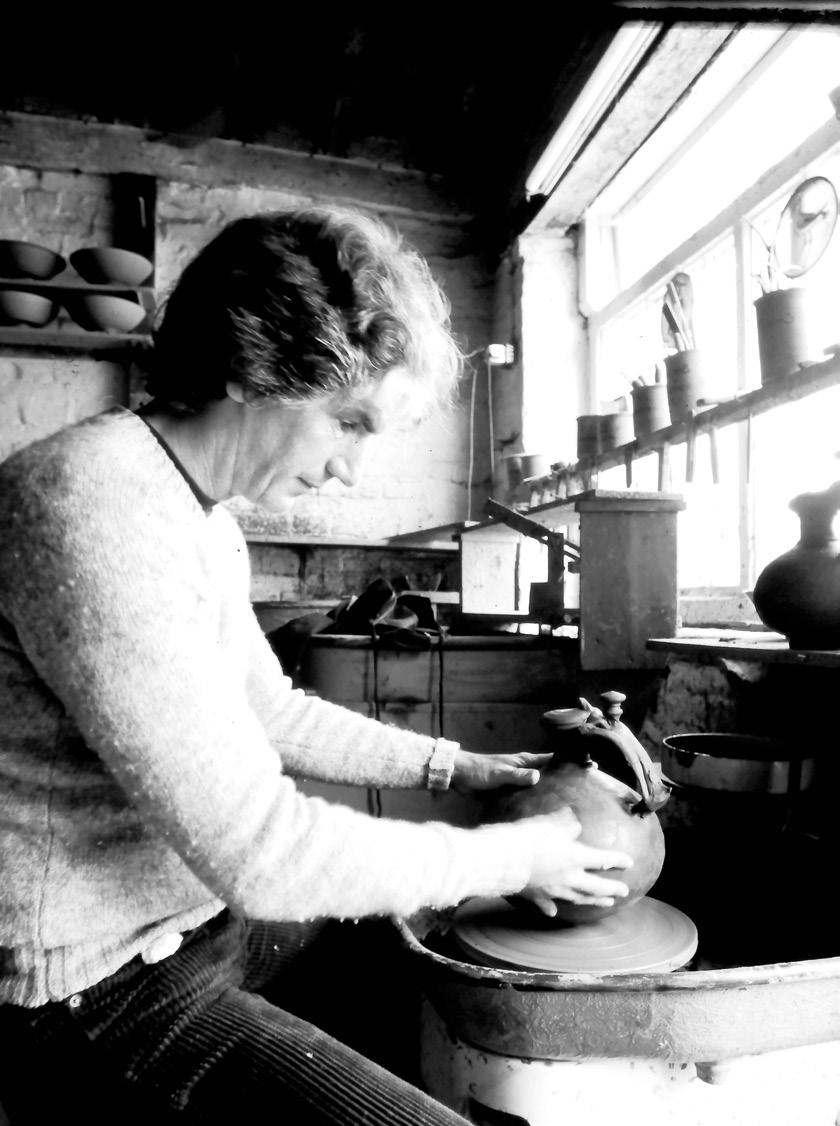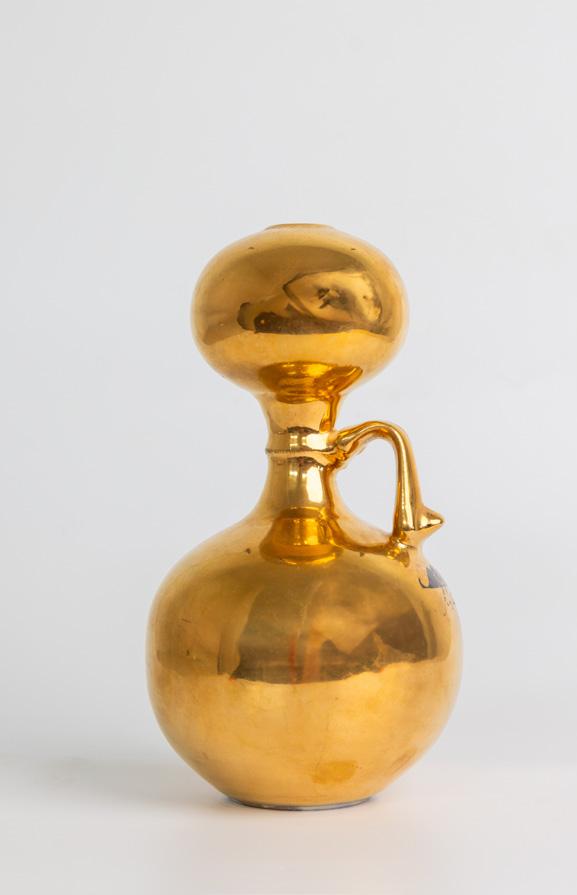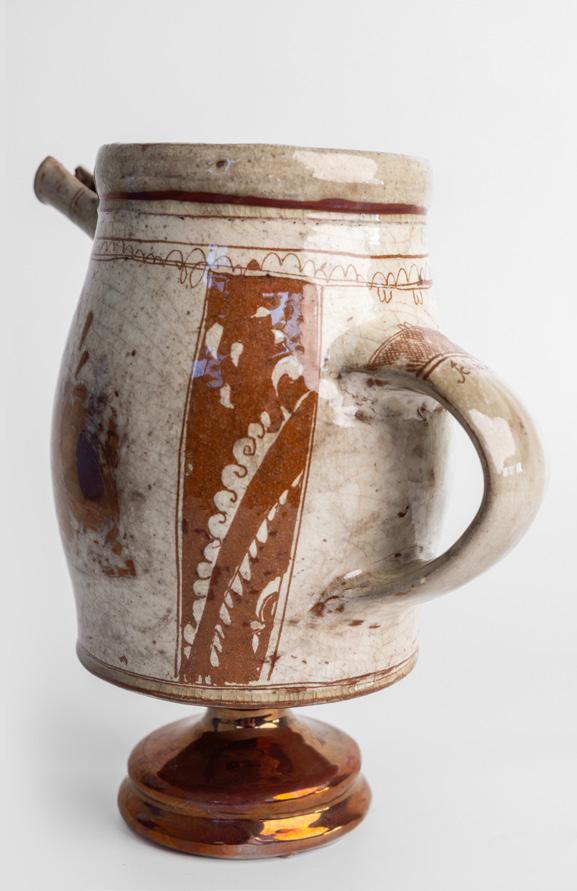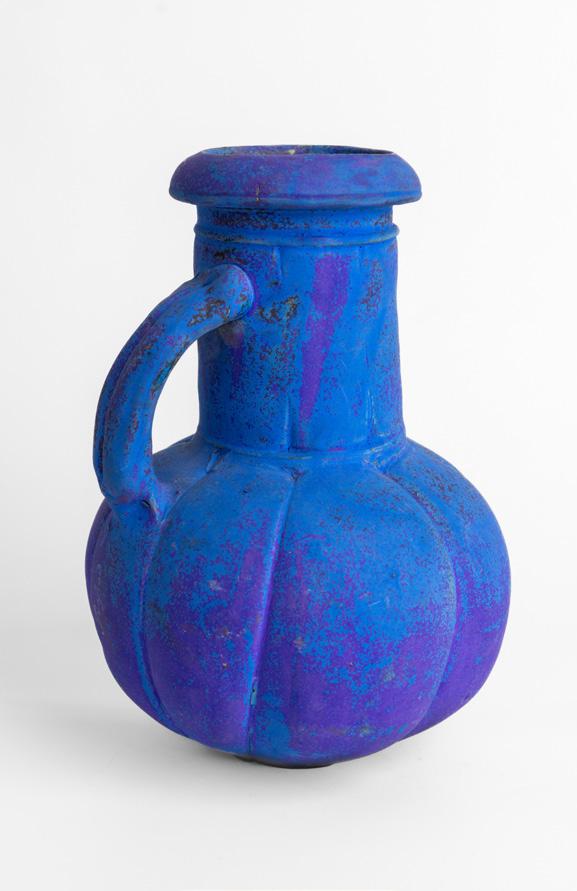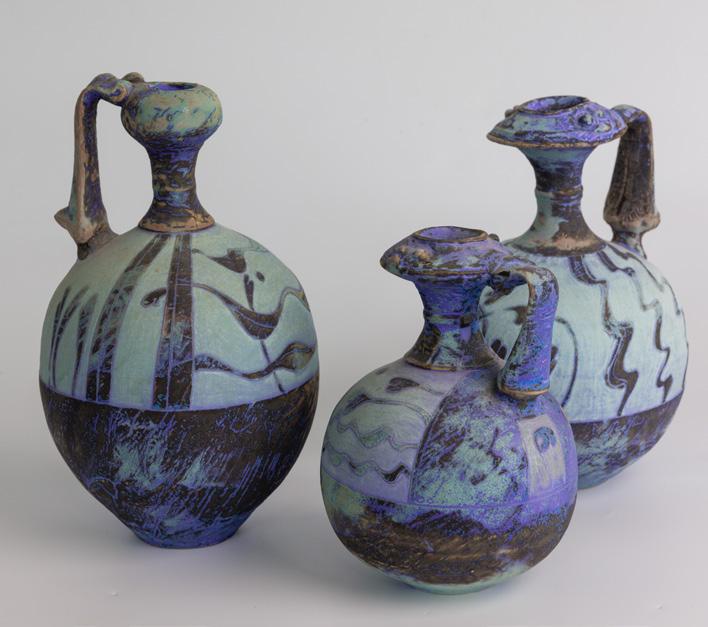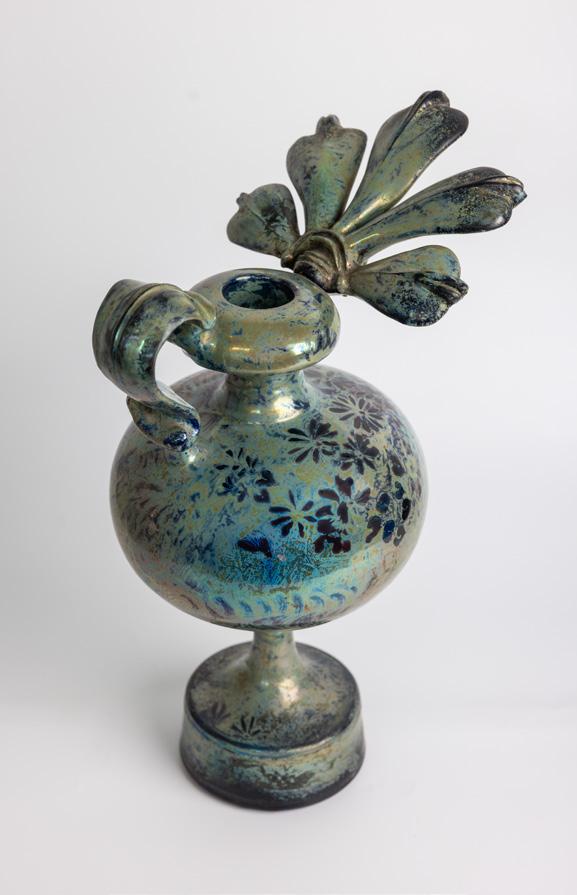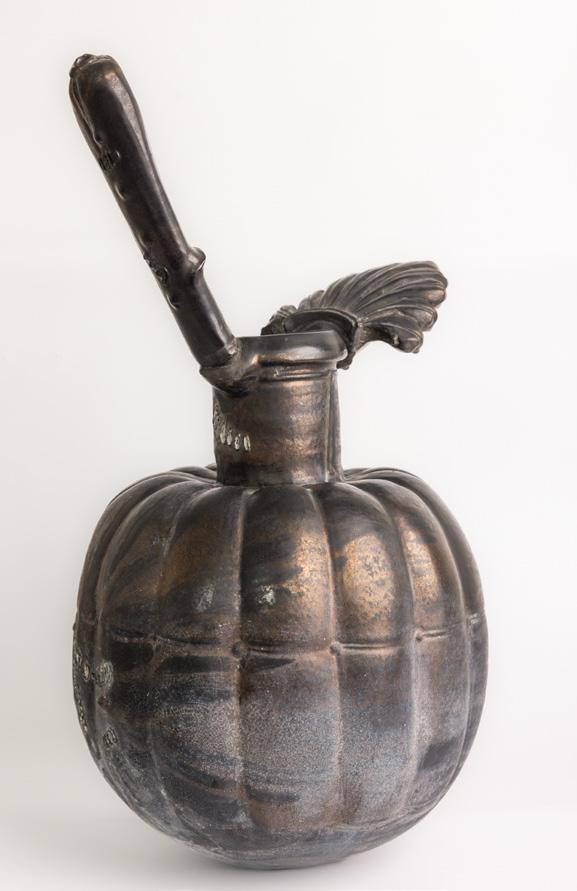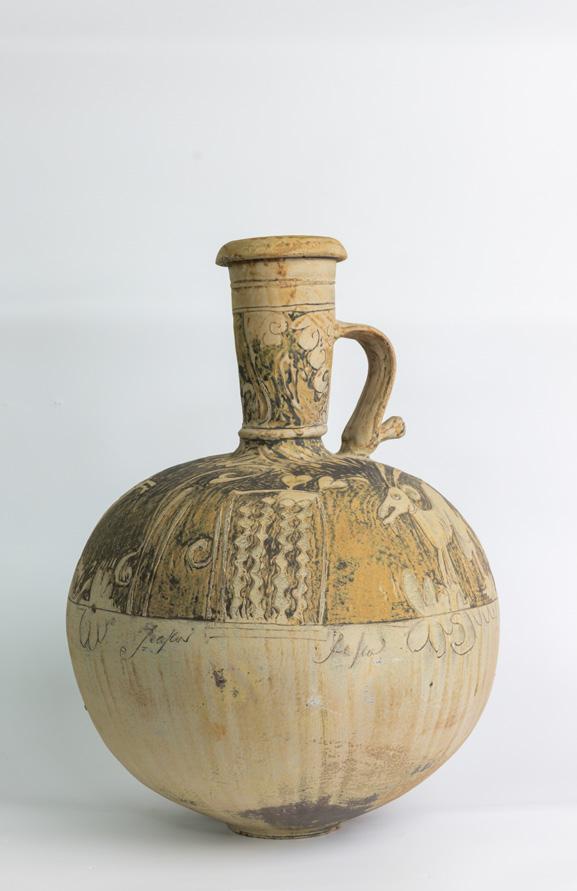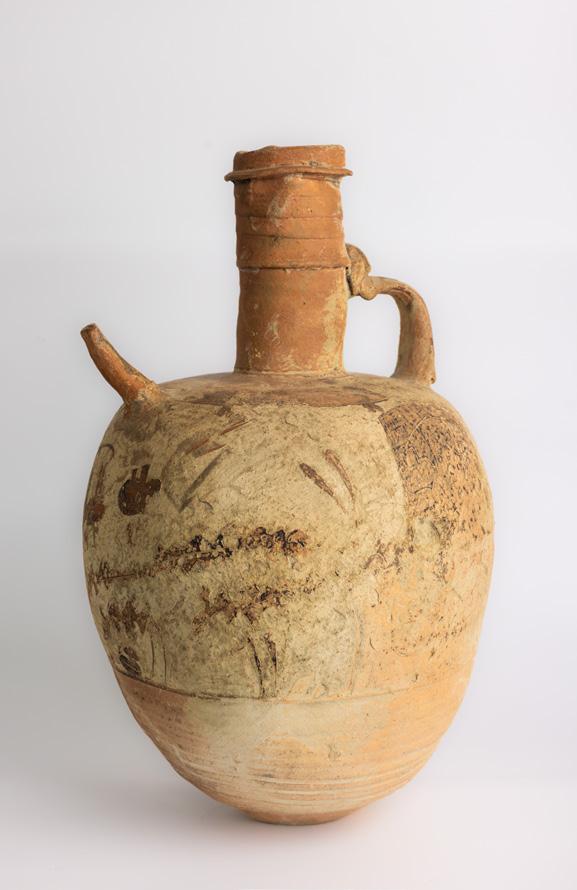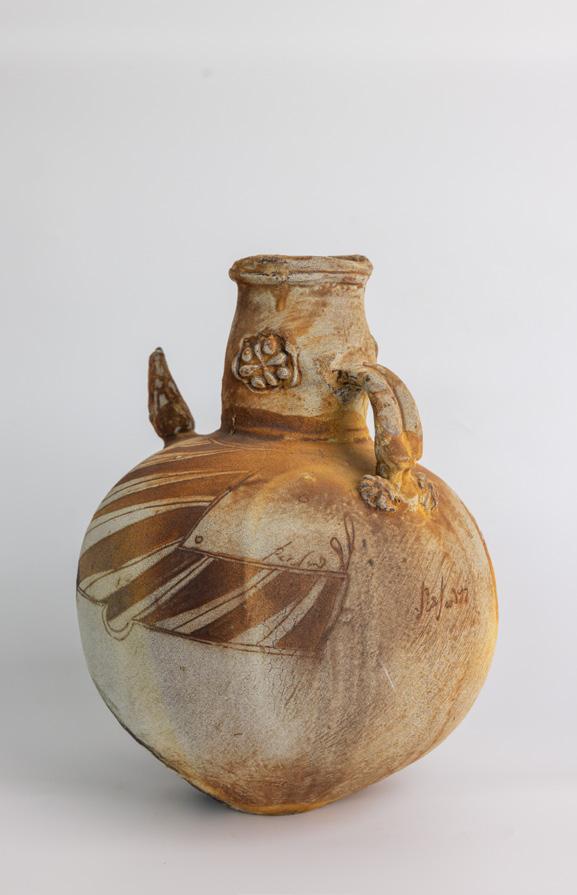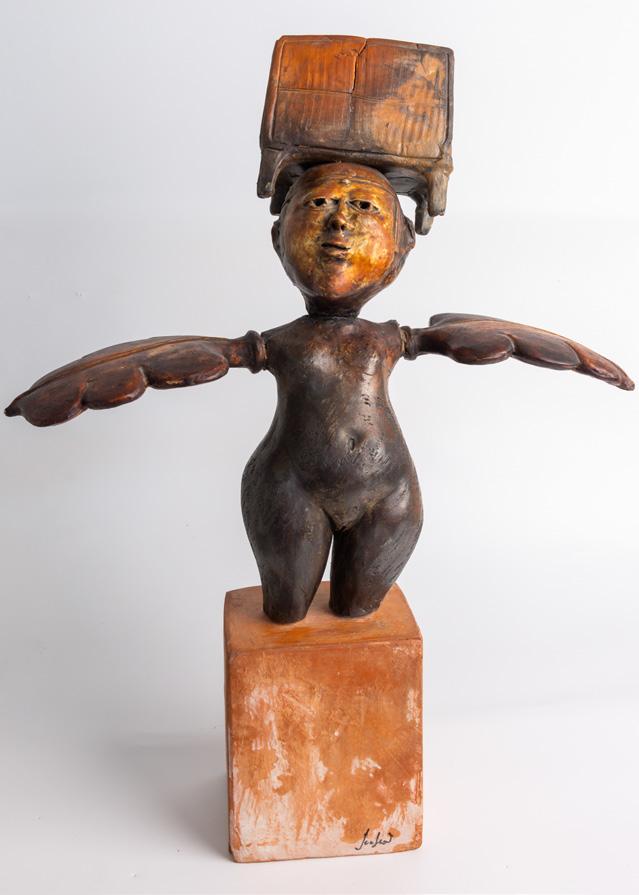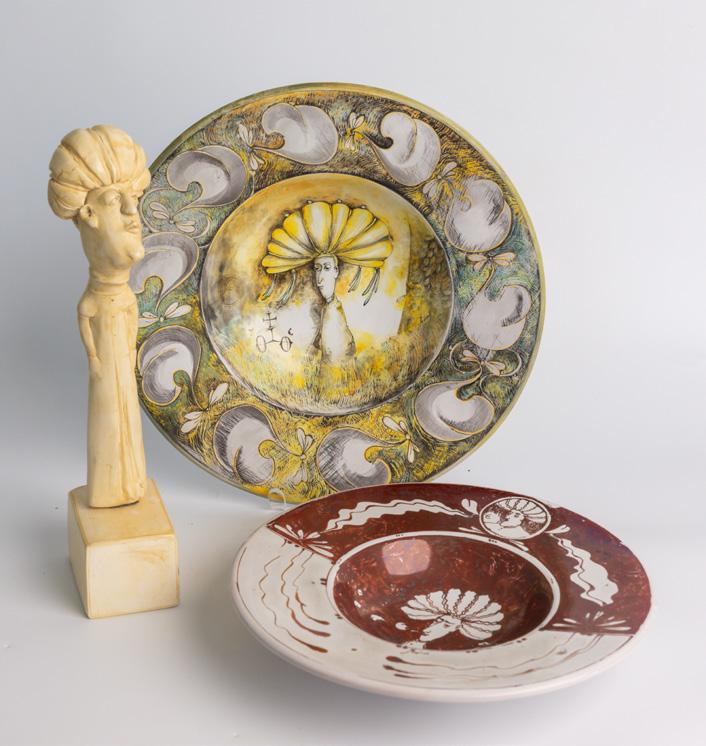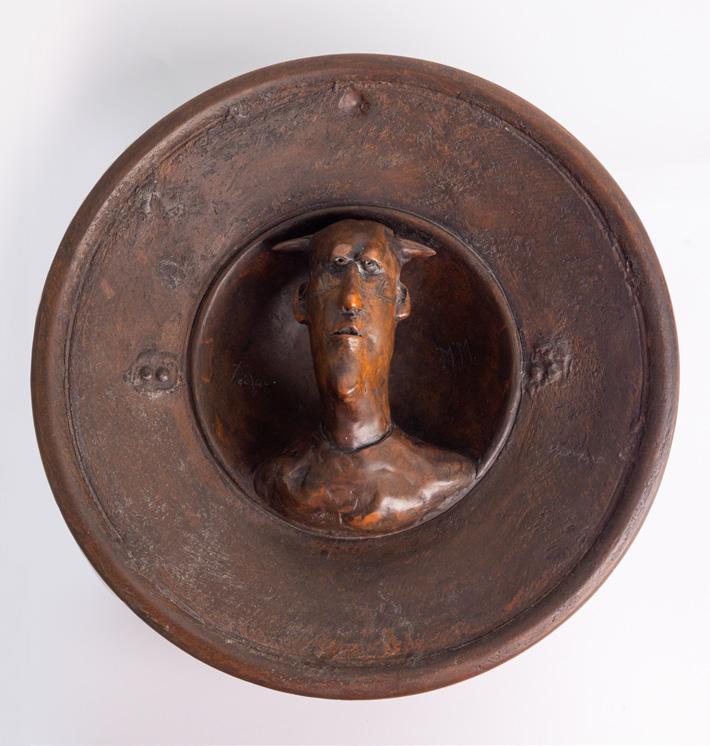Curatorial Statement
Alan Peascod devoted his life to the pursuit of transformation. Through heat, chemistry, line, and history, he coaxed meaning from materials—firing vessels into being that spoke not only of who he was, but of entire civilizations, remembered and reimagined. This retrospective gathers the work of a maker whose ceramics are not merely objects of rare beauty, but records of an artist in conversation with time.
Alan was a master of surface. His lustreware, dry glazes, and majolica forms are complex, often requiring multiple firings and technical feats most potters would avoid. Yet his obsession with surface extended beyond ceramics. As a daily ritual, he would meticulously polish his red VL Turbo Commodore, delighting in the smooth, sleek finish of the panels. Whether on a car bonnet or on one of his pieces, it was always about the surface—the way it could hold emotion, memory, and meaning.
Born in Cumbria, England, in 1943 and migrating to Australia in 1952, Alan’s early life was shaped by introspection, observation, and an affinity with the absurd. As a child, he was quiet and intensely self-contained, spending long stretches alone recovering from rheumatic fever. This early solitude taught him the disciplines of attention and patience—qualities that would come to define his studio practice. He was always drawing, sketching on anything close at hand, including the corners of tissue boxes in his final days.
He found his calling in ceramics after working briefly in a bronze casting factory and studying at the National Art School in Sydney, where he was mentored by masters such as Peter Rushforth. From the start, Alan was a restless and relentless experimenter, constructing his own kilns and obsessively modifying glaze recipes. He was an early pioneer of barium blue dry glazes in Australia—at a time when earthy wood-fired pots dominated the scene. His work, vivid and unconventional, was so startling that a blue-glazed piece was once removed from an exhibition for being “too loud” next to the brown ware. But Alan was never afraid to disrupt expectations. He was a trendsetter, not a follower, and his glaze surfaces—whether etched, dry glaze, or reduced lustre—shifted the trajectory of Australian contemporary ceramics.
Alan’s practice was shaped as much by his deep research into historical ceramic traditions as by personal innovation. He travelled widely and studied deeply, especially in the Middle East and later Italy. In Egypt and Iran, he was captivated by ancient ceramic techniques, Islamic architecture, and Sufi mysticism. In Gubbio, Italy—where Islamic lustre traditions met Renaissance invention—he found a kindred spirit in the late master potter Giampietro Rampini. Alan taught Giampietro reduced lustre while Giampietro taught Alan majolica. His work was a synthesis of the ancient and the modern: Persian calligraphy dancing across twentieth-century forms; Fatimidinspired patterning rendered in his own distinctive hand.
Yet for all his scholarly rigour, Alan was also deeply human—eccentric, humorous, and particular. He dressed sharply, often sporting red patent leather shoes. His studio was famously chaotic, with multiple projects underway, glaze tests stacked in corners, notes scribbled in margins. He could be shy and withdrawn unless the subject turned to ceramics or Middle Eastern politics, at which point he came alive— animated, incisive, razor-sharp, and engaged. He was never at ease with small talk, but if the conversation deepened, he was endlessly generous with insight.
Throughout his life, Alan remained as much an educator as an artist. He taught in Australia and abroad, sharing his knowledge of lustreware, glaze chemistry, throwing, and firing techniques with students who would carry forward his influence. Though introverted, he formed profound connections—most powerfully in one-on-one moments, where his passion and precision could shine.
To fire a pot is to transform it. The kiln is both crucible and final editor—there is no hiding from it. Alan understood this implicitly. He spent his life in conversation with the firing process, often pushing materials to their limits. He built kilns, broke rules, and tested glazes until they revealed their secrets. His life was a life of method, repetition, refinement. The chaos of his workspace belied the extraordinary control in the finished pieces. Nothing was ever done in half measures. Every form mattered. Every surface held intention.
Though best known for his vessels, Alan’s creative practice expanded during his Doctorate of Creative Arts. He branched into sculptural forms—works exploring human behaviour and the body. These figures, satirical and expressive, were a departure in medium but unmistakably his in voice and vision. Even here, the signature Peascod surface and sensitivity to form remained.
Even when illness meant he could no longer work with clay, Alan’s creative fire did not dim. He turned instead to drawing and printmaking, filling pages with new forms, humorous faces, and gestural lines. The impulse to make never left him—he drew on envelopes, sketchbooks, even tissue boxes. The materials changed, but the instinct remained: to observe, to record, to create.
This exhibition brings together works that span decades—bowls, platters, and jugs, from early dry-glazed experiments to the multi-layered richness of his later majolica. Each piece tells a story: of kiln firings lasting days, of pigments ground by hand, of ideas carried from the deserts of Iran to the galleries of Australia. His surfaces are never still—they shimmer, crackle, pulse. They are not decorations, but dialogues. Alan Peascod’s legacy is not simply in what he made, but in how he thought. He challenged traditions not to reject them, but to renew them. He believed that ancient techniques could inform contemporary Australian ceramics—that the past was not something to copy, but something to enter into conversation with. His work asks questions: What endures? What fades? What beauty can we still learn to see?
Even now, close to two decades since Alan’s death, his pots continue to speak. They speak of resilience and reverence, of precision and poetry. They speak of a man who never stopped drawing, never stopped refining, never stopped searching for the perfect surface. They remind us that the greatest work is not always loud—it endures.
As you walk through this retrospective, may you feel what Alan felt: the thrill of glaze turning to glass, of ancient patterns finding new breath, of fire transforming earth into something luminous and lasting. This is not just a record of a life—it is a celebration of a spirit that, like a long firing, still burns.
Professor Pedram Khosronejad Curator, Exhibitions and Collection
October 2025
SELECTED WORKS from the Exhibition
Gold Form 1981, gold resinate lustre over black glaze, 42 x 21 cm
Gold Pot 2000, gold resinate lustre over black glaze, 23 x 12.5 cm
Gold Form 1979, thrown form with press moulded components, gold resinate lustre, 39.5 x 31.5 cm
Jug 1983, reduced lustre, clear glaze over slip, wood fired, 23.5 x 18 cm
Press-Moulded Container circa 1987, stoneware, gas fired, dry glaze, thrown and modified, 27.5 x 17 cm
Dry Glaze Pot with Spout 1990, barium blue dry glaze, 30 x 19.5 cm
Dry Glaze Pots 2003, dry glaze, barium blue with sgraffito, different dimensions
Winged Lustre Pot 1994, reduced lustre, 40 x 25 cm
Winged Form 1988, slip cast wings, earthenware, matt glaze, gas fired, 40 x 30 cm
Fish Talk pot 1990s, dry glaze with sgrafitto, 32 x 24 cm
Container Form 1991, Shibboleth series, stoneware, gas fired, dry glaze with sgraffito, 51.5 x 36 cm
Container Form with Spout 1990, titanium dry glaze, gas fired, 52.5 x 31 cm
Tall Arrow Neck Jug 2003, dry glaze, multiple slips and glaze applications, multi-fired, gas reduced, 44.5 x 17 cm
Container Form 1997, stoneware, gas fired, sgraffito with dry matt glaze, 31.5 x 24.5 cm
A group of forms exploring figure with horns, a metaphor for aggressive, unscrupulous individuals.
Bovine Figure Series 2003, earthenware, gas fired.
Brown 23 x 12 x 5 cm
Dark Brown 26 x 12.5 x 4 cm
White 23.5 x 13 x 4 cm
A series of figures as studies in facial anatomy.
Wall Figures 2004, dry glaze, 32 x 12 cm
Dead Fish Society XI (Academic Series) 1995, vitreous earthenware, high fired, earthenware, gas, polished, 54 x 30 x 29 cm
Part of the Shibboleth series 1990, press moulded components, terracotta clay and vitreous slips
Group of works belonging to Mad Hatter series 2002, lustre bowl, majolica bowl and porcelain figure
Reflective Figure with Exotic Headdress IV
Plate - Bovine Series 2000, earthenware, gas fired, 30 cm
Forms 2004, experimental series, some from Garlic Breath series and
various dimensions.
Majolica
Twit Bird series,
Text copyright: Grafton Regional Gallery and The Artist
Images copyright: Alan Peascod Estate
Photography: Camilla Duffy
Catalogue Design: Taylor Made Graphics © Grafton Regional Gallery
978-1-7641885-2-4
This publication has copyright. Apart from fair dealing for purposes of research, study or otherwise permitted under the Copyright Act, no part may be reproduced by any process without permission. Enquiries should be made to Grafton Regional Gallery.
Grafton Regional Gallery is a cultural facility of the Clarence Valley Council.
Grafton Regional Gallery acknowledges the funding support of the NSW Government through Create NSW. www.graftongallery.nsw.gov.au
Cover Image: Alan Peascod Estate
